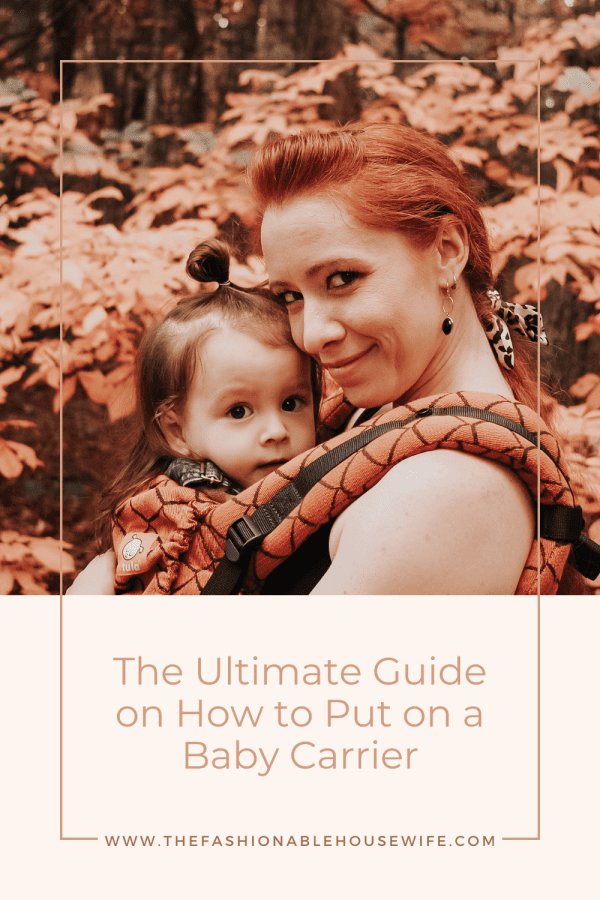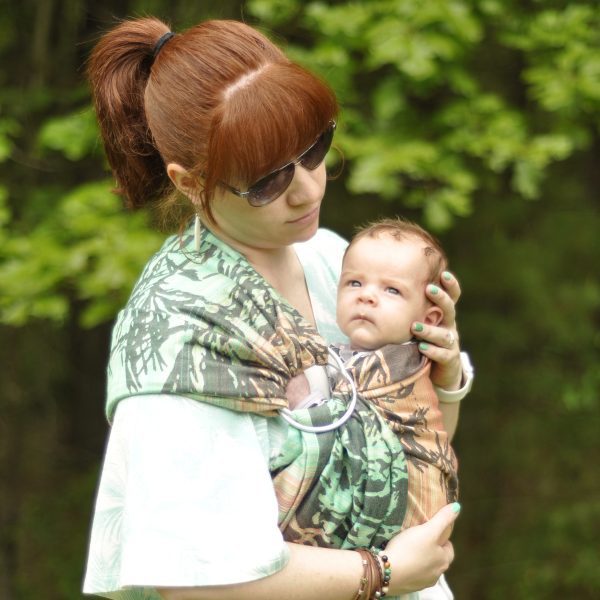The Ultimate Guide on How to Put on a Baby Carrier

Learning how to put on a baby carrier will definitely be a good thing for you. Your carrier must be suitable for your baby’s age. For instance, a front facing baby carrier is good for a baby that is about 5 to 6 months old. Just by picking the appropriate carrier and using it the right way, you are doubly safe—the kid’s body and your comfort are assured.
This guide gives insights into picking the right carrier, planning for a safe carry, and instructions for handling soft structured carriers, wraps, and Mei Tai carriers. You will learn how to make a baby comfortable, the common mistakes that can be avoided, and some tips for safe and enjoyable babywearing.
Choosing the Right Carrier
Honestly, picking a baby carrier isn’t just some checklist item—it’s kind of the whole foundation for not ending up with a cranky baby (or a sore back). You have to make sure it actually fits your little one’s size and age—don’t just grab whatever looks cute on Instagram. It better supports their hips, spine, and neck or you’ll regret it fast.
In particular, a front facing baby carrier can be a good option once your baby is a bit older. Take note, this carrier is not recommended for newborns.
Preparing for a Safe Carry
Safe and secure baby carrying is really all about being well-prepared. It would be essential to figure out the correct way on how to put on a baby carrier before going ahead to a safe carrying. Make sure your baby is awake and at ease, and also see to it that the carrier is clean and suitable for use.
Thinking about using one of those front facing baby carriers? Hold your horses. Your kid needs to have their head game strong—like, really solid neck muscles—otherwise, you’re just asking for trouble. Most folks wait till the little one’s about five or six months old.
Step-by-Step Guide to Putting on a Soft Structured Carrier
A soft structured carrier (SSC) is not only a more comfortable way to carry your baby but it is also a safer option for the child as well as the parent. It is very important that the baby is given the right support when you are out with the baby. Hence, being well versed in how to put on a baby carrier will provide proper support and also keep your baby safe when you are on the go.
Here’s how to put on an SSC:
- Place the carrier on your body with the waist belt around your hips and fasten it securely.
- Lift your baby and hold them against your chest.
- Put your baby’s legs through the leg holes and place them in the carrier’s seat.
- Put the shoulder straps over your shoulders and, for comfort, adjust the fit.
- Be sure your baby’s head, neck, and spine are supported and that the baby’s breathing part is free.
- Make sure the carrier is tight enough to hold your baby close to you but not too tight.
- Loosen or tighten the straps until your baby can be in a comfortable, correct position.

Mastering the Art of the Baby Wrap
In the beginning, using a baby wrap may seem complicated, but it provides soft support and allows your baby to be near you. A step-by-step practice with a wrap will gradually give you the confidence to securely hold your baby and at the same time be able to use your hands.
Here’s how to wear it properly:
- Grasp the wrap until its center is at your waist and the ends are lying evenly on both sides.
- End parts should be crossed at your back, folded over your shoulders to the front.
- Make a safe space with the cloth to keep your baby close to your chest.
- The baby’s legs and body should be pushed through the wrap; they ought to be snug and upright.
- Distribute the material over your infant’s back and bottom to hold him/her with even support.
- Wrap the ends around your waist and tie them securely.
- See if the baby’s head, neck, and spine are supported, and the airway is clear.
Securing Your Little One in a Mei Tai
The Mei Tai is a perfect combination of the ease of a wrap and the stability of a soft carrier. A properly done Mei Tai will not only make sure that your baby is close to you, but it will also be well-supported all the time.
In order to put this safely and comfortably on your baby, follow these steps:
- Place the Mei Tai on your body with the main panel against your chest or back.
- Tie the waist straps around your hips and secure them snugly.
- Lift your baby and hold them against your chest or back, depending on the carry style.
- Slide your baby’s legs through the openings and position them in the center of the carrier.
- Pull the shoulder straps over your shoulders and cross them behind your back.
- Tie the shoulder straps in front or at your waist for a secure fit.
- Make sure your baby’s head, neck, and back are well-supported and that they can breathe easily.
Ensuring Your Baby is Safe and Comfortable
Wrangling a baby carrier can feel like wrestling an octopus sometimes, but nailing the fit? Total game changer. First off, you have to make sure your little one can actually breathe—no squished noses or smooshed faces. And don’t forget about the basics: head, neck, spine, hips. All of it needs decent support or you’ll both regret it later.
Plus, if the carrier’s digging into your shoulders or making your back ache? Nope, hard pass. Get it snug, adjust those straps, and suddenly you’re a hands-free superhero—way easier to haul your kid around without wanting to cry by hour two.
Common Mistakes to Avoid
When learning how to put on a baby carrier, parents sometimes make mistakes that can affect safety. A common mistake is using a front facing baby carrier with a newborn, which should be avoided until the baby has strong neck control.
Moreover, the lack of support due to the loose fit of the carrier can make the parent and the baby unhappy, but they may not even realize that this is caused by the carrier.
Enjoying the Benefits of Babywearing
Wearing your baby? Totally life-changing. You get snuggles, they get cozy, and your hands are actually free for once—wild, right? But, real talk: if you don’t figure out how to put on a baby carrier, it’s all straps and chaos. Nail the setup, though, and suddenly errands aren’t a nightmare.
As babies grow, many parents try different positions, and a front facing baby carrier can be especially engaging since it allows little ones to observe their surroundings. This not only sparks curiosity but also supports brain development, though parents should still watch for signs of overstimulation.
Conclusion
Knowing the proper way on how to put on a baby carrier is a big help to the parents as it makes it easy for them to keep their baby safe and at the same time enjoy the closeness. It is a must to identify the best way to utilize each type of carrier since every one of them is designed for different ages and needs of the baby.
A front facing baby carrier, for example, is advisable to use with babies that are old enough to see around, thus not suitable for newborns. Parents can double their comfort and safety as well as save time if they choose the right carrier and use it properly.

